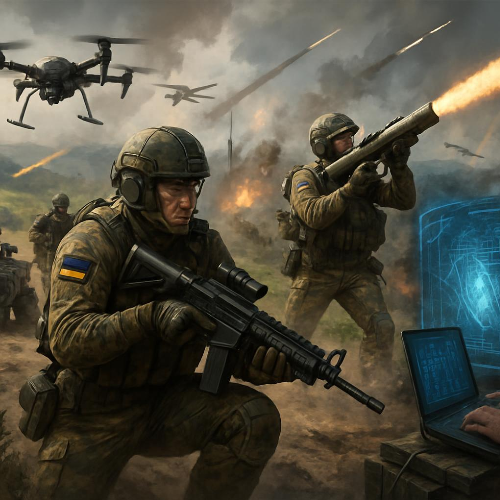Ukraine’s defense of its homeland has demonstrated a remarkable evolution in modern military strategy, showcasing how a defending nation can leverage both established military doctrine and cutting-edge innovation to counter a numerically superior adversary.
The Ukrainian approach represents a new paradigm in what we might call a hybrid operational force redesign capability for the “fight tonight force.”
Or the seamless integration of conventional Western weaponry with indigenous technological innovations.
At the core of Ukraine’s defensive capability lies a dual foundation.
Western-supplied conventional weapons have provided the essential backbone of their military resistance, offering the firepower and reliability needed to sustain prolonged defensive operations. These systems have proven their worth as the steady anchor of Ukrainian defense capabilities, providing the conventional military strength necessary to hold territory and repel advances.
However, it is Ukraine’s own innovations, particularly in drone warfare, that have captured international attention and redefined modern battlefield tactics.
Ukrainian forces have pioneered new approaches to unmanned systems that extend far beyond traditional military doctrine, creating novel applications that have surprised military analysts worldwide.
What sets Ukraine’s approach apart is not simply the use of advanced Western weapons or innovative drone technology in isolation, but rather their ability to effectively combine these two elements.
This integration has created a hybrid operational force redesign capability capability that maximizes the strengths of both conventional and unconventional systems.
The success of this a hybrid operational force redesign capability depends critically on effective command and control systems paired with advanced electronic warfare capabilities. These technological ecosystems serve as the nervous system that ties together disparate weapon systems, enabling coordinated operations that leverage both conventional firepower and innovative drone capabilities in synchronized attacks and defensive maneuvers.
Ukraine’s strategic situation illustrates a fundamental principle of military doctrine: the mathematical disadvantage faced by defensive forces. Traditional military theory suggests that successful offensive operations require a three-to-one superiority in forces. Ukraine finds itself in the inverse position – they are “the one, not the three” – facing numerically superior opposition while conducting defensive operations.
This numerical disadvantage has necessitated the development of innovative tactics that multiply the effectiveness of available forces.
By leveraging their a hybrid operational force redesign capability, Ukrainian forces have found ways to overcome traditional mathematical disadvantages through superior tactical innovation and technological integration.
Ukraine’s defensive strategy offers important lessons for military planners and defense analysts.
The conflict demonstrates that modern warfare increasingly favors forces that can rapidly adapt and integrate diverse technologies.
The Ukrainian model suggests that the future of warfare may belong to forces that can effectively blend established military capabilities with rapid innovation, supported by robust command and control networks that can coordinate complex, multi-domain operations.
This approach may prove particularly valuable for nations facing numerically superior adversaries, offering a potential pathway to effective defense through technological innovation and tactical creativity.
Ukraine’s defense represents more than just resistance to invasion.
Their approach embodies a fundamental shift in how modern warfare can be conducted. By combining Western conventional arms with indigenous innovations, particularly in drone warfare, and tying them together through sophisticated command and control systems, Ukraine has created a hybrid operational force redesign approach that maximizes defensive capabilities while minimizing traditional numerical disadvantages.
This approach may well define the future of asymmetric warfare, demonstrating that innovation, integration, and adaptive tactics can provide viable alternatives to traditional force-on-force confrontations.
The featured image was generated by an AI program.


